List of Authors
>>About this blog
Recent blog post
|
[Silver]
April 26, 2016 12:00
In mid-April, we introduced the gorgeous Yae-zakura of Ginza Sakura-dori St.
From late April to early May, the American dogwood on Matsuya Street blooms. It's best to see it. (As of April 23)
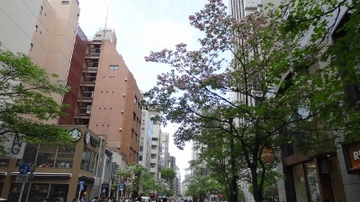
Hitotsubago on Miyuki Street, commonly known as Nanjamonja Tree, has a lot of white and neat flowers.
You can also enjoy this until the end of April. I think the place should be near Watami and Sennenkyu.
This year, we pruned, so the tree shape may be small and unsatisfactory.
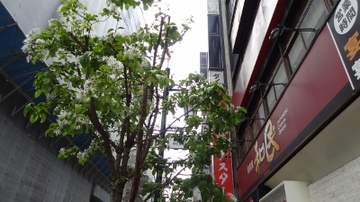
I photographed the flowers of "Ichibago" in close-up.
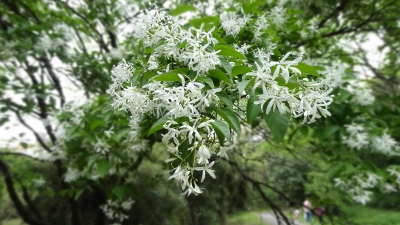
As the name implies, Marronnier Street is planted with Western horse chestnuts, collecting small flowers and shaped like a spindle.
Today, on April 23, some buds are opening and flowers are beginning to bloom.
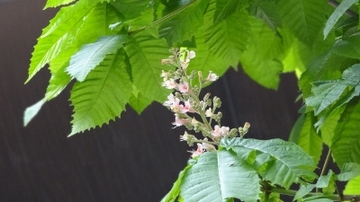
From Marronnier Gate and Plantan, through Ginza Street, to Showa-dori is beautifully colored.
The best time to see it will be during the consecutive holidays from April 28 to May.
Please enjoy    before and after shopping before and after shopping  and meals. and meals.
[Sam]
April 25, 2016 18:00
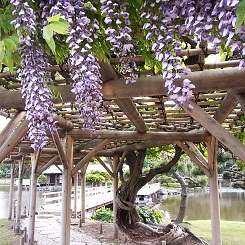 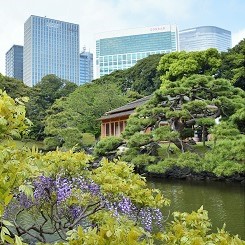
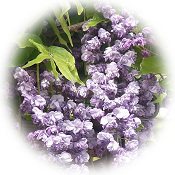 On April 20, the Tokyo Regional Meteorological Observatory announced one of the biological seasonal observation information "Noda Fuji Flowering". On April 20, the Tokyo Regional Meteorological Observatory announced one of the biological seasonal observation information "Noda Fuji Flowering".
One day earlier than normal and two days earlier than last year.
The wisteria trellis set up in each of the "Small-shaped islands" in the middle of the "Oden Bridge" in front of the "Yon Liaokan Ruins" in the "Tide Pond" in the Hamarikyu Onshi Garden are also light purple flowers. It has been colored.
Fuji is a vine deciduous leaf Kimoto of the legume family.
The fragrance is fragrant, the spikes hang down and shaken by the wind, and it is a gorgeous and elegant flower shape.
In endemic species Japan, there are Noda Fuji and Yamafuji, and in general, Fuji seems to refer to Noda Fuji.
<Noda Fuji> The spikes are long, and the vines are (from the top) right rolls
<Yamafuji Temple> The spikes are short, and the vines are left rolls (from the top)
In addition to the familiar mauve color, there are white, peach, light red, etc.
When I asked the garden, it was said that most of the park was Yamafuji, but on the wisteria trellis on the north side of the "Oden Bridge", a rare Noda Fuji type "Yae Kuroryuto" with a slightly different hair color is planted.
Also known as "Peony Fuji".
The stamen is remarkably peony, and it is said to be a unique variety that becomes "peony bloom".
[Dimini ☆ Cricket]
April 25, 2016 12:00
The other day, I introduced dogwood on Kibikicho Street as its best time to see it, but dogwood on Matsuya Street is also at its best.
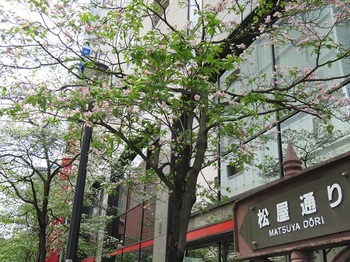
In particular, you can see the map below , dogwood on the pink part of Matsuya Street. , dogwood on the pink part of Matsuya Street.
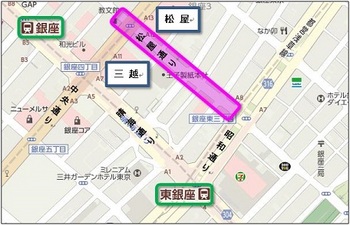
By the way, even if dogwood is in full bloom, what looks like a petal is not a petal but a total bract, and the center mass is the inflorescence.
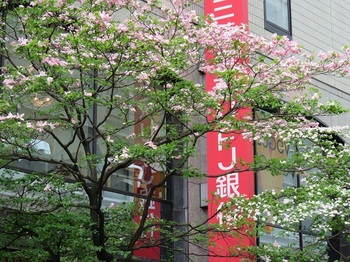
As for the actual flowers, inconspicuous flowers with a diameter of about 5 mm of four petals gather and bloom sequentially.
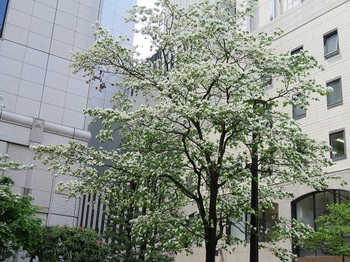
dogwood is a representative flowering tree in the United States and is distributed from Ontario, Canada to Massachusetts, Texas, and northeast Mexico in the United States.
The official Japanese name is American Yamaboshi, but another name dogwood is better known.

In 1912, the city of Tokyo presented Sakura (Yoshino cherry tree) to the United States, and in return, white flower seeds were donated by the United States in 1915.
Two years later, in 1917, red flower seeds were presented.
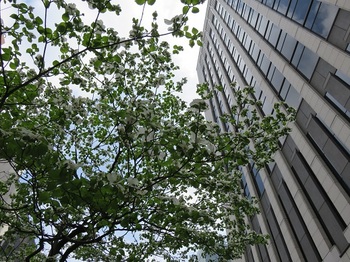
Every year, Golden Week comes during the flowering season of this flower, so if you look at the flowers of dogwood, you will be happy that the holiday season has come.  
     
[Dimini ☆ Cricket]
April 23, 2016 09:00
The best time to see the dogwood on Kiboricho Street.
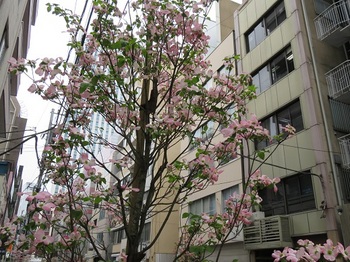
To be precise, you can see the map below , the pink dogwood on Kiboricho Street. , the pink dogwood on Kiboricho Street.
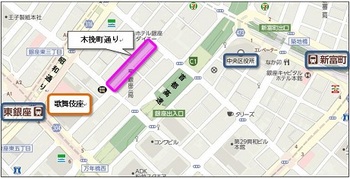
The dogwood planted on both sides of this street is a relatively young tree that blooms earlier than other blocks on Kibikicho Street and dogwood on Matsuya Street.  
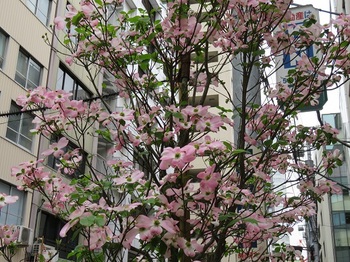
I really like the sound of the word "Kibikicho-dori", but the only street running in Ginza that bears the name of the town is currently Kibikicho-dori and Kibikicho Naka-dori.
It makes you feel the history as well as Shinmachi-dori and Kiyacho-dori in Kyoto.
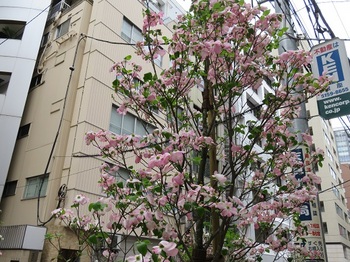
Originally, Kobiki-cho was a town where sawmillers gathered from various countries lived for the renovation of Edo Castle and the construction of a castle town.
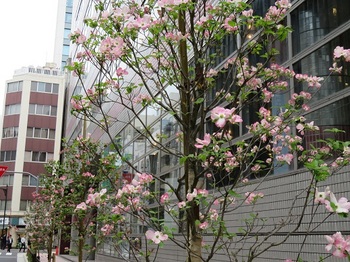
By the way, it seems that wood grinding is not a person who cuts a tree, but a craftsman who saw logs cut from a mountain into pillars, beams, boards, etc. using a saw called saw, and along with carpenters It seems that wood grinding was an engineer who played an important role in architecture.
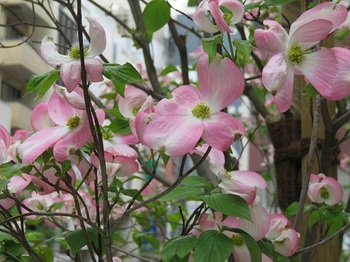
A playhouse was built in the “craftsman town” and became a “play town”, and since the Meiji era, luxury restaurants lined the eaves and flourished as a “restaurant town”.
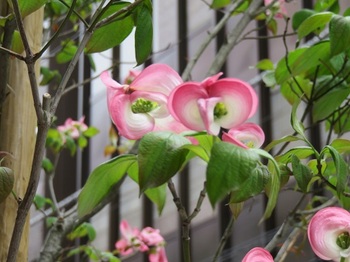
The name of "Kinbiki-cho" was reclaimed in 1951 for rubble treatment by Sanjukenbori in an air raid, and was lost when Ginza and Kobiki-cho were connected to land (the landfill was completed the following year 27).
Even if "Kinbikicho" disappears, "Kinbikicho-dori" remains, and you can feel the depth of Ginza's history there.
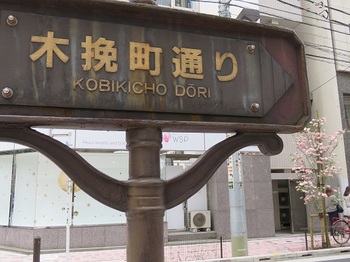
     
[Sam]
April 22, 2016 12:00
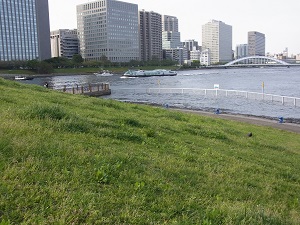 The Sumida River diverts east at Tsukuda 2-chome, upstream of Chuo-ohashi Bridge at the mouth of the mouth, flows between Tsukuda 2.3-chome and 1.2-chome, Echinakajima Koto-ku, and is divided into east and west at Toyosu Saving Ground, respectively. It is connected to the Toyosu Canal and the Spring (Haru) shipping river. The Sumida River diverts east at Tsukuda 2-chome, upstream of Chuo-ohashi Bridge at the mouth of the mouth, flows between Tsukuda 2.3-chome and 1.2-chome, Echinakajima Koto-ku, and is divided into east and west at Toyosu Saving Ground, respectively. It is connected to the Toyosu Canal and the Spring (Haru) shipping river.
During the development of the Okawabata River City, Ishikawajima Park, which was built along the Sumida River school river between Chuo-ohashi Bridge and Aioi Bridge, was expanded and maintained to Aioi Bridge south in 2007.
With the adoption of Super dike, the green space, which has a hydrophilic nature so that it can interact with water, is popular as a place for local residents to relax, and is crowded with jogging and walking people.
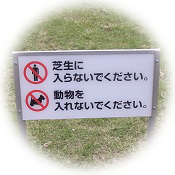 On April 18, the Tokyo Regional Meteorological Observatory announced one of the biological seasonal observation information `` Shiba sprout '', but the lawn in the open open space is gradually becoming darker, young leaves of the trees sprout, and the refreshing season has reached. Was. On April 18, the Tokyo Regional Meteorological Observatory announced one of the biological seasonal observation information `` Shiba sprout '', but the lawn in the open open space is gradually becoming darker, young leaves of the trees sprout, and the refreshing season has reached. Was.
By the way, this year's germination is 11 days later than normal and 5 days later than last year.
If you look closely at your feet, the green area of the slope is full of wild flowers that you can feel spring.
You can also see starlings gathering around the ground, walking around the ground, and thumb.
From the left, Oinunofuguri, Tachiinunofuguri, Tokiwahaze, Cuurigusa, Nazuna
    
From the left, white clover, red clover, crow peas, harzion, Dutch minagusa
    
[Sam]
April 21, 2016 14:00
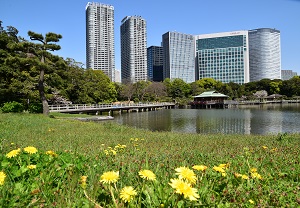
The yellow dandelion flower, which stands out at a glance, is a spring tradition, but can now be found in winter sunsets.
On April 6, the Tokyo Regional Meteorological Observatory announced one of the biological seasonal observation information "dandelion flowering".
By the way, this year's flowering was about the same as normal year, 6 days later than last year.
It has long been said that native species's Kanto Dandelion, which is distributed around the Kanto region, has been pushed by the naturalized species's Seiyo Dandelion in recent years to reduce the population, but 88% of the dandelion collected in Tokyo's 23 wards, seems to have occurred between dandelion and dandelion.
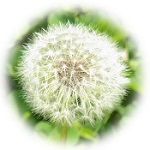 In terms of appearance, the canto dandelion is closely attached to the "total bracts" that support the petals from below and do not Kaide toward the outside, but the "total bracts" of the dandelion wraps the petals It is said that it is distinguished by warping away from the "piece", but there are also intermediate characteristics and complicated. In terms of appearance, the canto dandelion is closely attached to the "total bracts" that support the petals from below and do not Kaide toward the outside, but the "total bracts" of the dandelion wraps the petals It is said that it is distinguished by warping away from the "piece", but there are also intermediate characteristics and complicated.
Dandelions blooming around the pond (Oizumi) with the tide in the garden can be seen in the appearance of Kanto dandelion, but when asked the garden, it is rare in Tokyo because there is not much effort in the cultural property garden He commented that the possibility of dandelion, which is rare in Tokyo, cannot be denied.
I can't forbid nostalgia, probably because of the naturalness being secured.
By the way, there seems to be various theories about the etymology of the dandelion, but there is a play that breaks and wars both ends of the dandelion stem, and since this resembles a drum, a traditional Japanese instrument, the sound of hitting the drum It is said that the theory is derived from the onomatopoeia called "Tan Pompom".
The kanji name "Kamakoei" is derived from the Chinese name and seems to be the name of herbal medicine.
|
Links
|
![]()
![]()
![]() before and after shopping
before and after shopping ![]() and meals.
and meals.





 On April 20, the Tokyo Regional Meteorological Observatory announced one of the biological seasonal observation information "Noda Fuji Flowering".
On April 20, the Tokyo Regional Meteorological Observatory announced one of the biological seasonal observation information "Noda Fuji Flowering".













 The Sumida River diverts east at Tsukuda 2-chome, upstream of Chuo-ohashi Bridge at the mouth of the mouth, flows between Tsukuda 2.3-chome and 1.2-chome, Echinakajima Koto-ku, and is divided into east and west at Toyosu Saving Ground, respectively. It is connected to the Toyosu Canal and the Spring (Haru) shipping river.
The Sumida River diverts east at Tsukuda 2-chome, upstream of Chuo-ohashi Bridge at the mouth of the mouth, flows between Tsukuda 2.3-chome and 1.2-chome, Echinakajima Koto-ku, and is divided into east and west at Toyosu Saving Ground, respectively. It is connected to the Toyosu Canal and the Spring (Haru) shipping river. On April 18, the Tokyo Regional Meteorological Observatory announced one of the biological seasonal observation information `` Shiba sprout '', but the lawn in the open open space is gradually becoming darker, young leaves of the trees sprout, and the refreshing season has reached. Was.
On April 18, the Tokyo Regional Meteorological Observatory announced one of the biological seasonal observation information `` Shiba sprout '', but the lawn in the open open space is gradually becoming darker, young leaves of the trees sprout, and the refreshing season has reached. Was.










 In terms of appearance, the canto dandelion is closely attached to the "total bracts" that support the petals from below and do not Kaide toward the outside, but the "total bracts" of the dandelion wraps the petals It is said that it is distinguished by warping away from the "piece", but there are also intermediate characteristics and complicated.
In terms of appearance, the canto dandelion is closely attached to the "total bracts" that support the petals from below and do not Kaide toward the outside, but the "total bracts" of the dandelion wraps the petals It is said that it is distinguished by warping away from the "piece", but there are also intermediate characteristics and complicated.
